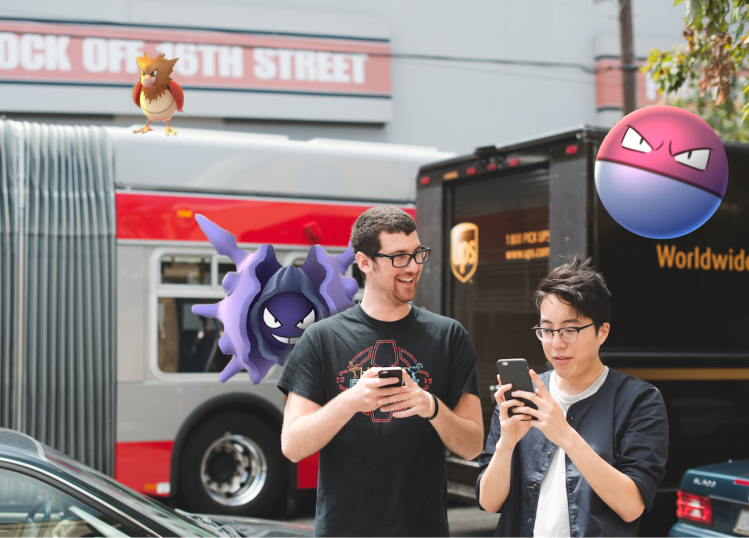Pokémon Go launched in the U.S. on July 17, and it has already become a cultural phenomenon. Developed by Niantic, it’s now the most-downloaded game in U.S. history. Three days after its release, it was on over 5 percent of all Android phones in the U.S.
It seems like everyone is playing the game.
But while Pokémon Go has done a great job with user acquisition (it helps when you’re working with a 20-year-old franchise with dozens of games, TV episodes, films, and other mech), it’s not actively working on retaining those users. And as any app developer can tell you, retention rates are abysmal by day 90 — on average, under 5 percent will come back to your app.
Virality will only keep the game successful for so long. Niantic needs a solid retention strategy. A proven way to retain users is with push notifications. For continued success, here are three push campaigns Pokémon Go should send to keep its players chasing, battling, and leveling up even after the hype wears off.
1. Promote nearby lures with timely alerts
Lure’s are an exciting component of Pokémon Go. The rules:
- Lures only last 30 minutes.
- Lures have to be activated at PokéStops (in-game landmarks based on real-life landmarks, like museums, monuments, and more).
- Lures can be easily obtained via in-app purchases.
Since every player wants a lure, it makes sense to send push notifications alerting people of their presence. In this scenario, the game would send push notifications announcing nearby lures, and informing players they have 30 minutes left until the lure expires. The message could say something like, “There are three active lures in your area that expire in 30 minutes. Come back to the app to catch them all!”

Above: A “Poké-push” notification.
Due to its timely nature, this reactivation campaign would immediately encourage players to jump back in the game. It would also improve the user experience. As it is now, players have to stumble upon lures by chance or continuously play the game. As Pokémon GO’s average gaming session is 33 minutes, a push notification would likely be successful at re-engagement.
2. Save battery power with relevant notifications
We mentioned above that Pokémon Go’s averaging gaming session is 33 minutes. For every 30 minutes of play, the game eats up 15 percent of a person’s battery usage. Comparatively, Facebook only uses 5 percent for that time frame, and Spotify uses zero. Pokémon Go comes with a built-in battery saver option, but it’s not enough.
Why is this? Pokémon Go uses GPS to pull world data into your smartphone. Instead of draining players’ batteries, Pokémon Go could send notifications telling players to download sections of the map for offline use. The app would then understand where users are and send them a push notification that Pokémon are nearby. Since players wouldn’t have to leave the app on in the background, this would save battery life, but still keep them in the loop.
No one wants to go on a Pokémon binge, but realize they are left with only have 25 percent battery life. By preventing battery drainage and sending more relevant messages, you’ll be able to extend the lifetime of in-game sessions.
If you’re worried about users missing this push notification, you can automatically send the alert by services using machine learning algorithms that analyze individual app usage patterns and automatically sends push notifications when users are most likely to open. Gaming company Pixowl used this type of solution to alert users to promotions on in-game currency. Using such a solution, Pixowl increased revenue by 17 percent.

3. Re-engage after a crash & encourage loyalty
The biggest complaint by Pokémon Go players is that the app freezes or crashes when players try to catch Pokémon. Unfortunately, if players have regular poor experiences, they’ll abandon the app.
According to one Compuware study, only 16 percent of people will reopen an app if it failed to work twice. The biggest problem encountered? The app froze or crashed.
Segment the players who had a negative experience and send them messages designed to reactivate through a drip campaign.
After a crash, send a push notification to users, apologizing and inviting them back to play. If players don’t respond within three days, send a follow-up push notification and email (to reach even those who opt-out of push), offering incentive for re-engagement. Since Pokémon Go offers in-app purchases of PokéCoins, you could give players who experienced a crash 50 free coins if they come back to play.
Not only does this make up for the negative experience, but it fosters good user experience and encourages loyalty — so maybe those players will give a five-star rating in the App Store.
Pokémon Go is a major phenomenon right now, and a lot will evolve with the game in the next 30-60-90 days. Who knows — it could become the next Angry Birds. Its success will hinge on the strategy for long-term player retention, so the sooner Pokémon Go firms up its strategy, the better.
Momchil Kyurkchiev is the CEO and co-founder of Leanplum, the most complete mobile marketing automation platform, delivering meaningful engagement across messaging and the in-app experience.
VentureBeat's mission is to be a digital town square for technical decision-makers to gain knowledge about transformative enterprise technology and transact. Learn More

